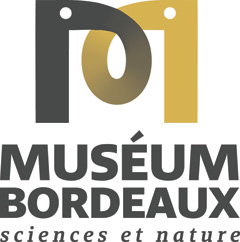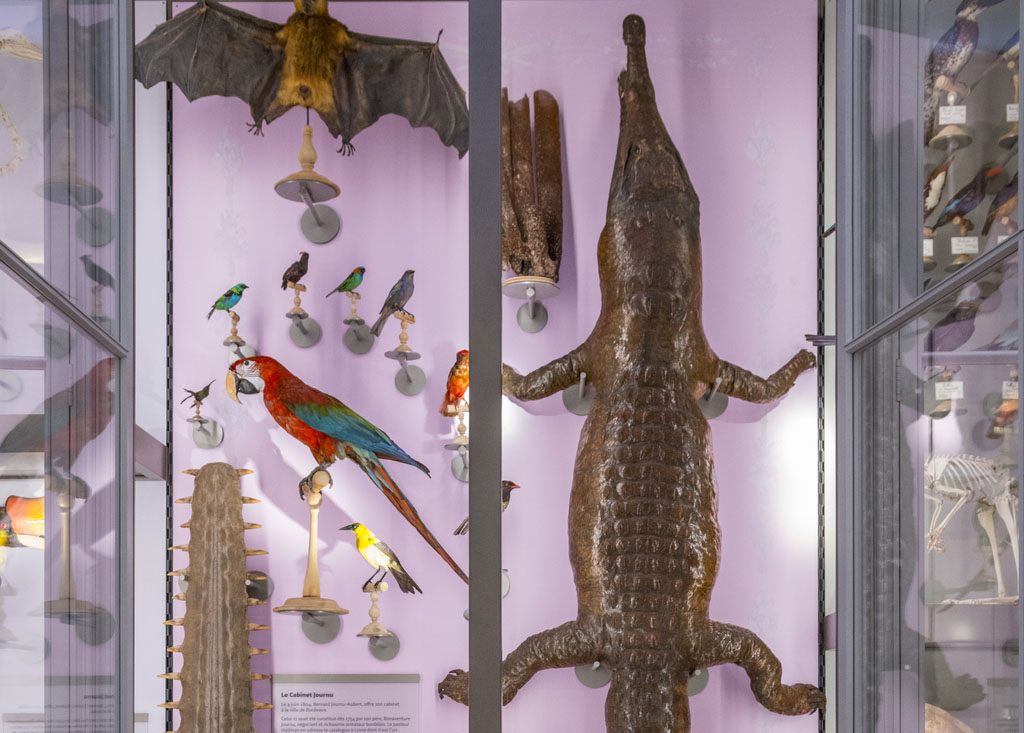
Journu’s crocodile
Orinoco crocodile, Crocodilus journei Bory de Saint-Vincent, 1824
Stuffed in the 18th century
This crocodile is one of the Museum’s oldest specimens. It is part of the Journu-Auber bequest (1804), and was used to describe the species.
In the 18th century, men of learning developed a taste for the natural sciences, and many private cabinets of curiosities sprang up across Europe. In 1754, Bonaventure Journu, an immensely wealthy merchant and shipowner, began exhibiting many exotic items in the cabinet at his town house in Bordeaux.
On 4 June 1804, one of his sons, Bernard Journu-Auber, who had gone on adding to the collection, bequeathed it to the City of Bordeaux. He asked for a curator to be appointed and for the collections to be “exhibited such that his countrymen could readily benefit from them”.
However, the collection catalogue from 1842 onwards has been lost, and only two crocodiles, including this one, used to describe two new species, can be attributed to the collection with certainty. These specimens were long coveted by the famous naturalist Georges Cuvier, and later by Étienne Geoffroy Saint-Hilaire, for the Muséum National. But Bordeaux’s local councillors refused, because it would have offended the donor.

Dogue de Bordeaux
Canis familiaris
Stuffed between 1899 and 1921
This Dogue de Bordeaux, or French mastiff, is part of the original collection of dogs created by Joseph Künstler, director of the Museum in the early 20th century.
Joseph Künstler, director of the Muséum de Bordeaux from 1898 to 1921, created a very unusual collection of stuffed dogs. At a time when natural history museums were devoting themselves to the “kingdom of nature”, what we know as biodiversity today, Künstler widened the scientific scope of his establishment. Among other innovations, he acquired nearly 150 specimens of various species, for technical teaching purposes. Approximately 70 dogs were stuffed, while the other exhibits consisted of skeletal mounts and skulls. To obtain these specimens, Künstler sent out a circular letter to pedigree dog owners.
Künstler was particularly interested in the Dogue de Bordeaux breed, for which he determined the second standard in 1910. Native to Asia, the Dogue de Bordeaux would appear to have been introduced into Europe during Antiquity. A member of the Mollosoids group (Bulldogs, Boxers, etc.), the breed make excellent guard dogs.
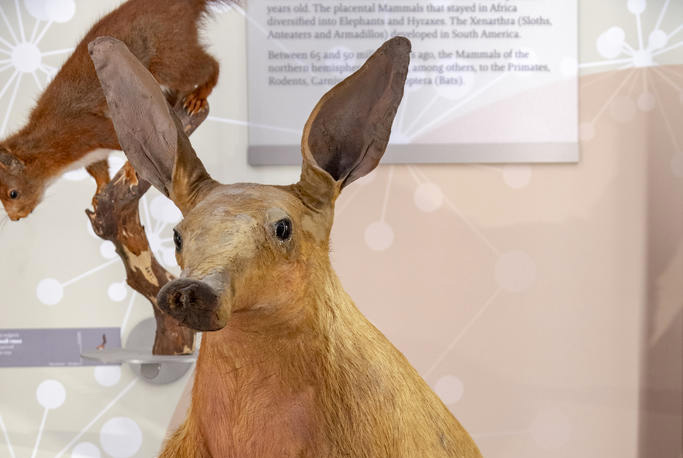
Aardvark
Orycteropus afer
Stuffed specimen (2006.4235)
The aardvark is a nocturnal mammal native to sub-Saharan Africa. It lives primarily in savannas and forests where there is soft soil.
Aardvarks spend the day resting in underground burrows dug with their powerful claws. They come out after sunset to look for ants and termites to eat. They detect their prey with their keen hearing and sense of smell. To capture insects, the aardvark uses its long tongue covered in sticky saliva.
Despite its strict diet, the aardvark also feeds on a variety of cucumber (Cucumis humifructus) that grows in the ground. The fruit has a high water content and is a source of moisture for the aardvark, which helps spread the seeds in its dung.
Watch this video of a baby aardvark born at Cincinnati Zoo (USA) in 2017.
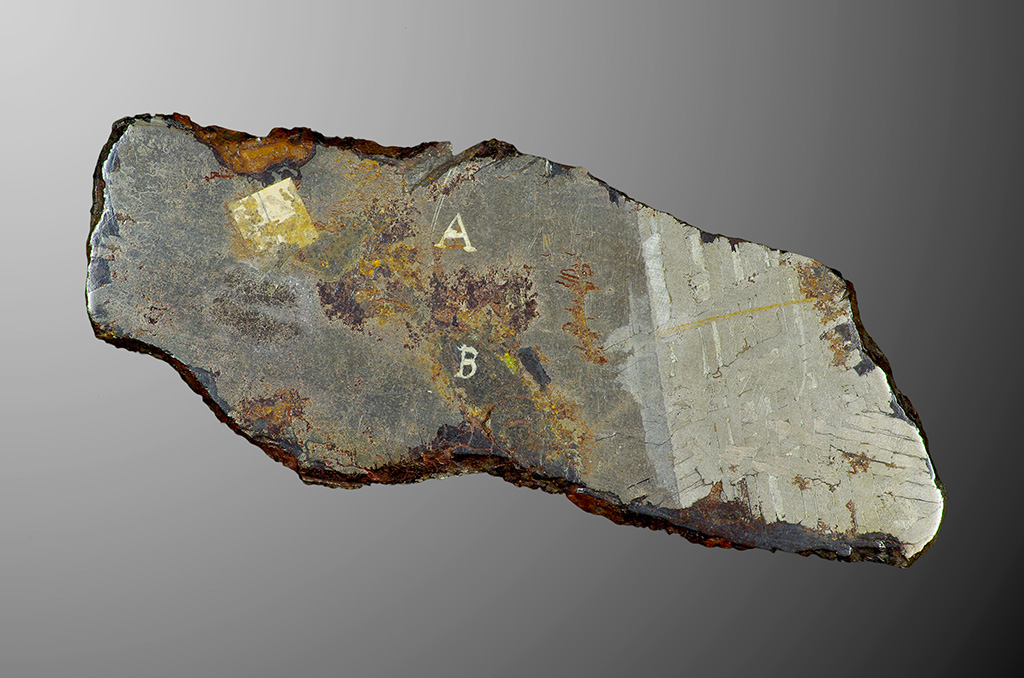
Meteorite
(2004.191)
Initially thought to be sacred treasures, then terrestrial rocks struck by lightning, meteorites were not known to come from outer space until the 19th century
This specimen is a fragment from the Toluca meteorite discovered in Mexico by Spanish conquistadors in 1776. It is thought to have fallen to Earth over 10,000 years ago.
It was used for centuries by the local population, unaware of its extraterrestrial origins, for making metal objects. Composed of iron and nickel, its original total mass is estimated to be three tonnes!
On its polished surface you can see geometric structures known as Widmanstätten patterns which are figures made by long nickel-iron crystals.
Learn more about this meteorite in the Handbook of iron meteorites.
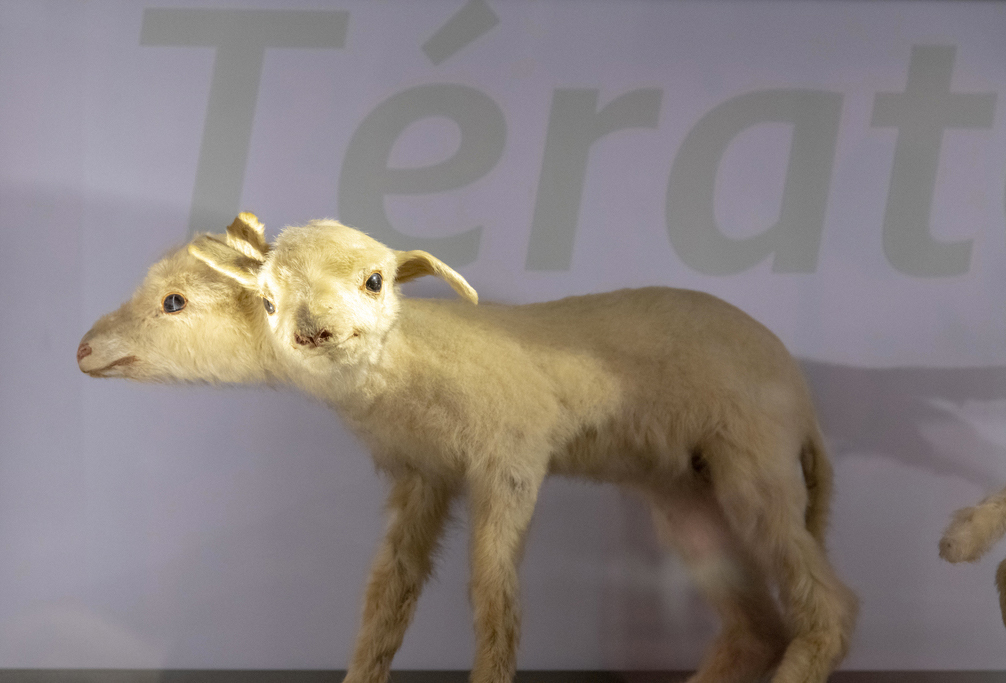
Two-headed sheep
Ovis aries
Stuffed specimen with a congenital defect (2005.204)
This specimen is a monosomian atlodidymus: a single body with two separate heads. In ancient times, the existence of animals and humans with deformities were considered acts of the gods. Then in the Middle Ages, these kinds of deformation were seen as the work of Satan. These ‘monstrosities’ were accused of bringing bad luck and were often rejected or killed. From the 18th century, however, collectors of curiosities became fascinated with these malformed creatures. The study of congenital abnormalities and abnormal formations, or teratology, did not became a proper scientific discipline until the 19th century. French naturalists Étienne (1772-1844) and Isidore (1805-1861) Geoffroy Saint-Hilaire created a nomenclature that described these anomalies.
Find more information on the website of the Testut-Latarjet Museum of Anatomy and Medical Natural History.
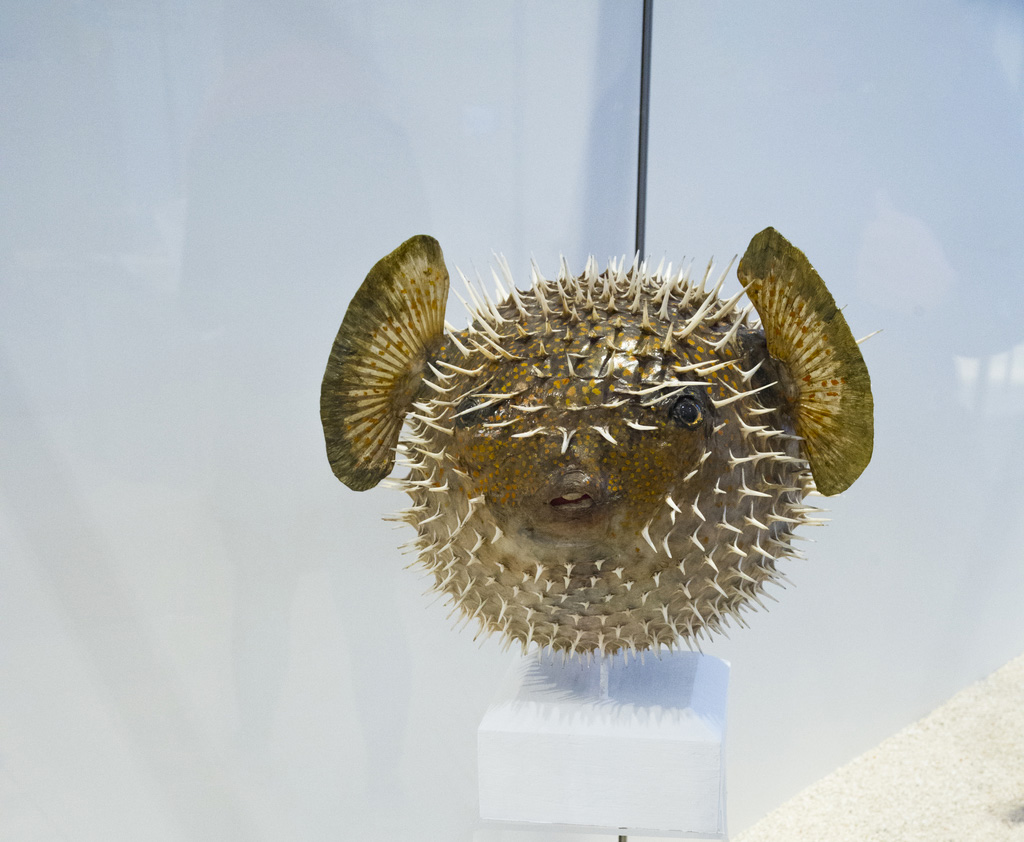
Porcupinefish
Diodon hystrix
Stuffed specimen in a defensive posture (2007.4727)
Found in tropical and subtropical waters around the world, the Diodon hystrix has one astonishing characteristic: its scales are modified into spines. This means that when the porcupinefish is threatened, it inflates its body making the spines stick out, hence its name of porcupinefish.
The Diodon also secretes a paralysing neurotoxin, tetrodotoxin, if its physical protection is no deterrent to more fearless aggressors. It has a nocturnal activity between sunset and sunrise when it feeds on crustaceans and marine gastropods. By day, it rests under a rock or in a crevice.
Find out more information about this unusual fish here.
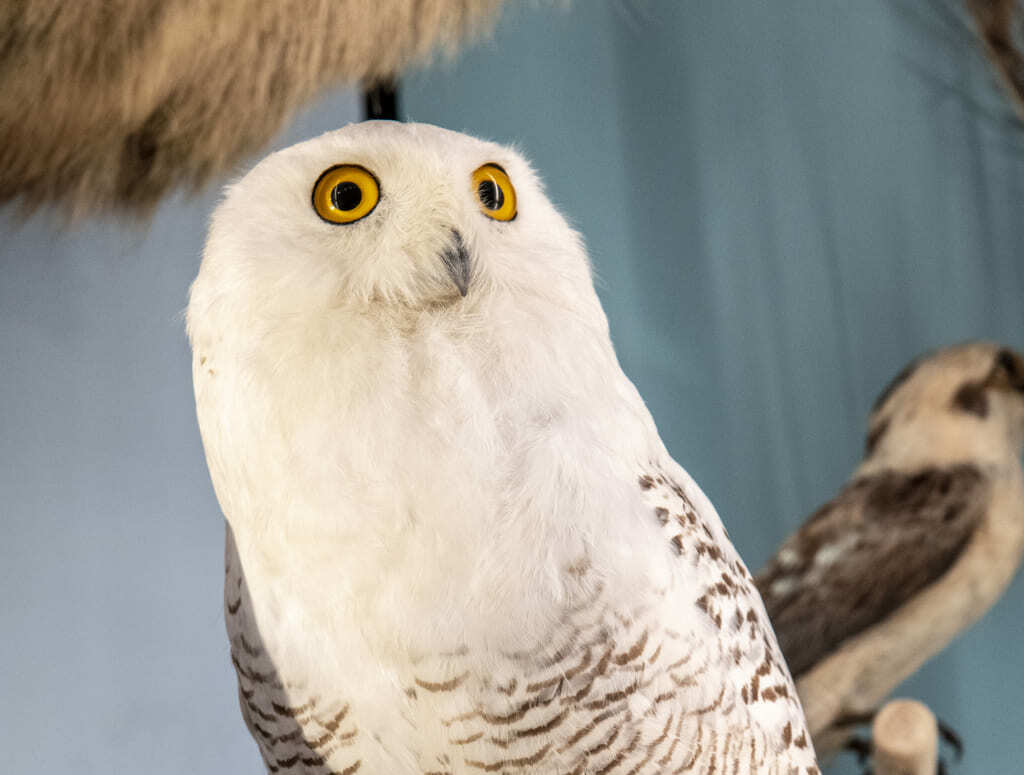
Snowy owl
Bubo scandiacus
Stuffed specimen (2013.2158)
The snowy owl is a bird of prey that lives on the Arctic tundra. Its common name ‘snowy owl’ is misleading. In actual fact it belongs to the same genus as the Eurasian eagle-owl.
The snowy owl is a still hunter, swooping from its perch before silently gliding to its prey. It is active by day, feeding mainly on small mammals. It is also known to supplement its diet by capturing other birds, insects, crustaceans and fish.
The females are larger than the males and have spotted plumage, while the males are plain white. This specimen, which entered into the museum collection in 2013, is a female.
Watch a video showing a snowy owl hunting here.
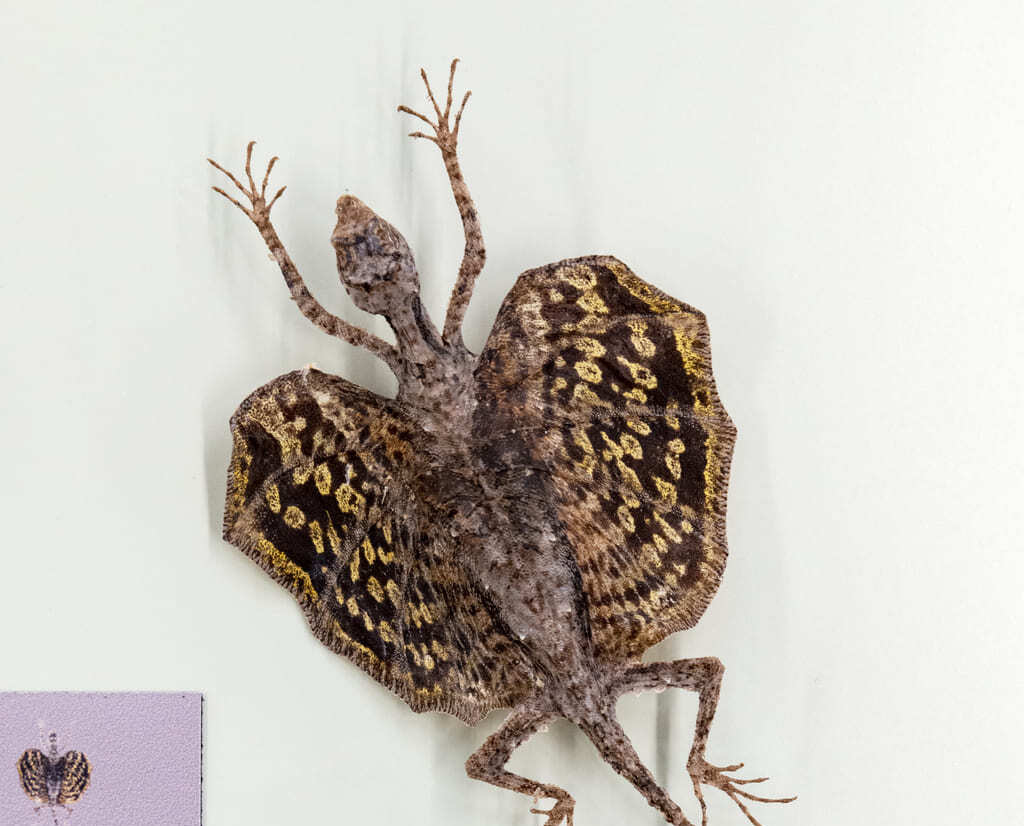
Flying dragon
Draco volans
Stuffed specimen (2007.4777.1)
This species of lizard growing up to around 20 centimetres in length is native to Southeast Asia where it can be found in secondary forests and tropical rainforests. It is active during the day and is arboreal, which means it lives exclusively in trees. The flying dragon is an insectivore, feeding mostly on ants. Despite its name, the lizard does not fly with wings in the anatomical sense of the term. They are, in fact, membranes supported by its elongated ribs that extend outwards. The flying dragon uses its ‘wings’ to glide from tree to tree, but is not capable of powered flight like birds or bats. At rest, the flying dragon folds its ‘wings’ down the length of its body.
See a clip from a report featuring the flying dragon here.
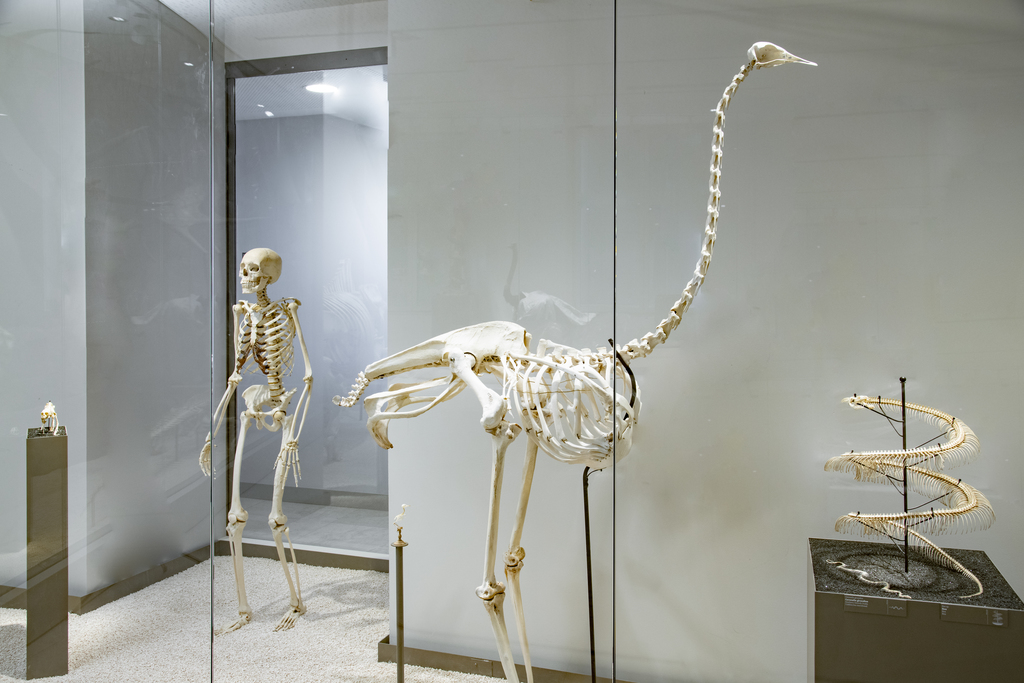
Common ostrich
Struthio camelus
Mounted skeleton (2003.1336)
The ostrich is the largest species of bird in height and weight living today, as well as the fastest on land. At 2.5 m tall and weighing up to 130 kg, it is capable of running as fast as 70 kmph. A flightless bird, it feeds mainly on grass and seeds. The ostrich ranges from Mauritania to Sudan, from Kenya to Tanzania and can be found in southern Africa. Another characteristic: ostriches are the only birds to have just two toes on each foot.
Ostriches are sexually dimorphic, meaning males and females are very easy to tell apart. The male has black plumage on top and white undersides, while the female is smaller and has grey-brown plumage.
The skeleton on display at the entrance was restored in 2013.
See a clip from a report on the ostrich’s running ability here: https://www.youtube.com/watch?v=JILXV8tnC54
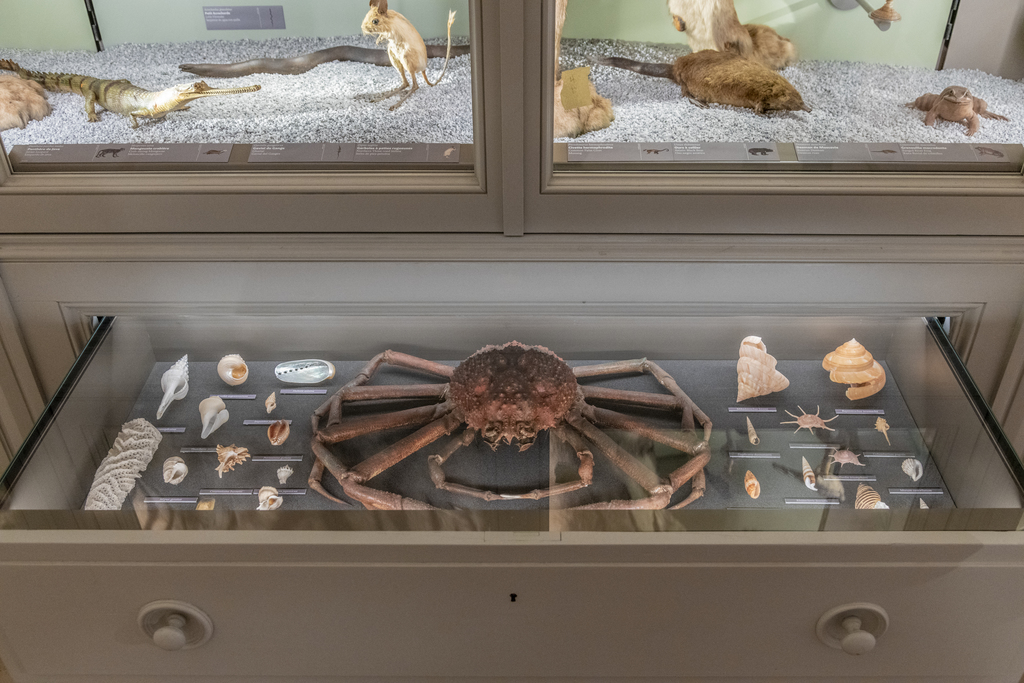
Japanese spider crab
Macrocheira kaempferi
Stuffed specimen (2010.453.1)
This giant crab is the largest living arthropod. It can achieve a leg span of up to 3.5 m and live as long as 100 years in deep water off the coast of Japan. Its age can be estimated from the size of its first pair of legs, which continue to grow through its lifetime. The Japanese spider crab can be found at depths of 600 m where it forages for crustaceans, molluscs and fish to eat.
This specimen was donated to the National Museum in Paris in 1869 by A. Milne-Edwards, an expert on crabs. In his letter, he pointed out that one of the legs was missing, but suggested making a cast from the opposite leg, and that ‘the trickery would hardly be noticed’. Look for the plaster leg the next time you visit the museum!
You can also see living specimens in the aquarium in La Rochelle: https://www.aquarium-larochelle.com/preparer-sa-visite/encyclopedie-especes/crabe-araignee-geant-du-japon
